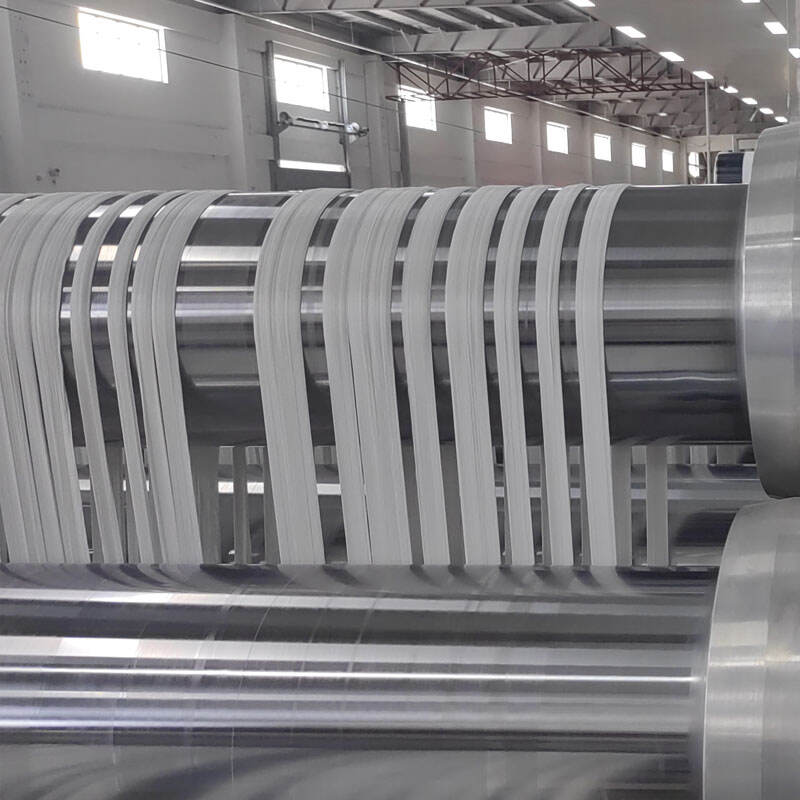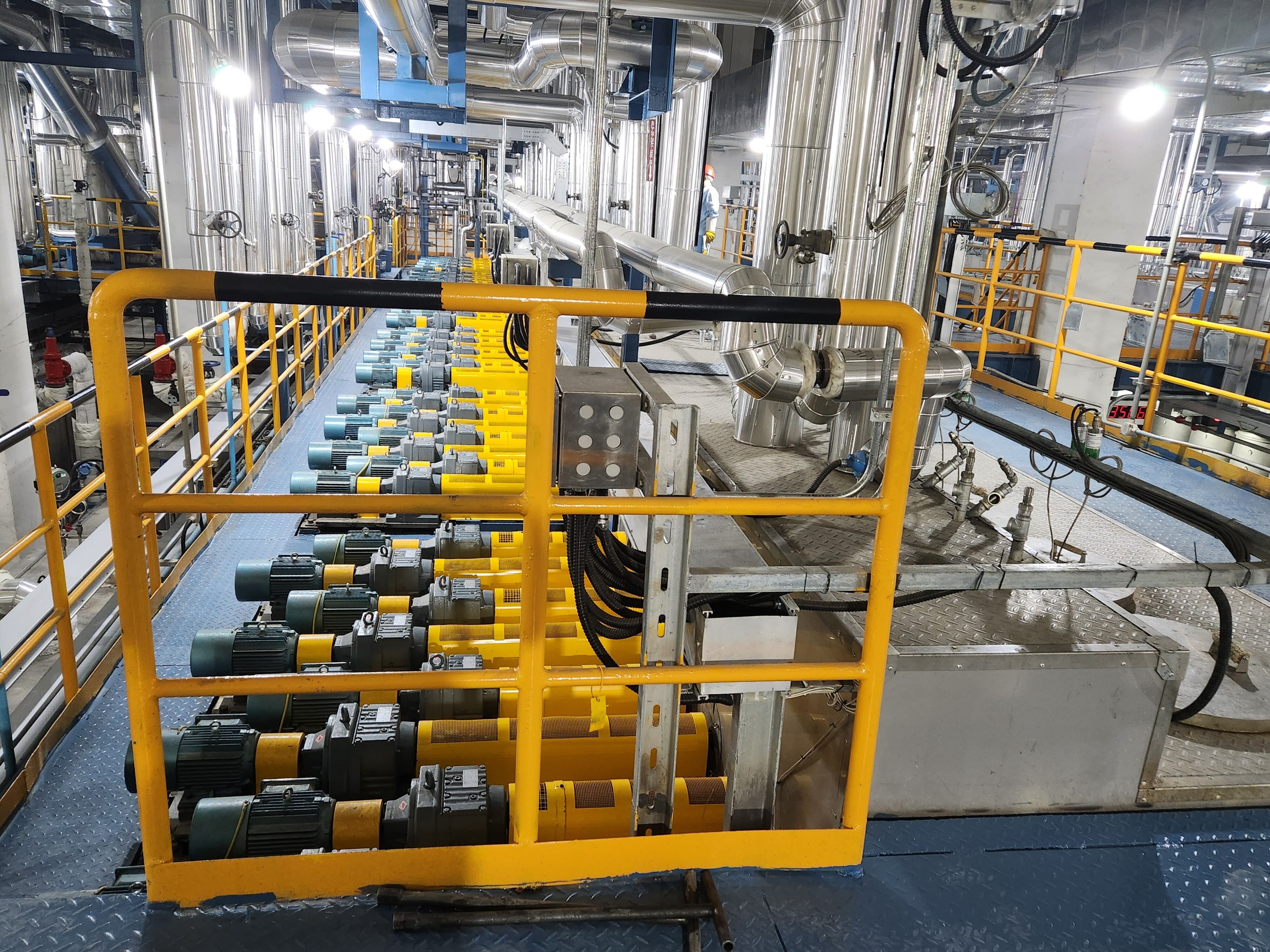In today's manufacturing landscape, polyester staple fibre (PSF) efficiency impacts one's ability to compete effectively within a market. Efficiency also determines production capacity, cost control, and market responsiveness. As a result of the need for efficiency, PSF production lines have integrated advanced technology to reduce the manual removal of inefficiencies, such as bottlenecks, downtime, and quality inconsistencies. Being a leading provider of advanced industrial solutions, Softgem designs and optimizes PSF production lines to enable manufacturers simplify workflows, increase production, and minimize losses. Here are some of the ways modern PSF production lines enhance efficiency.
In manual PSF Production, routine activities such as feeding raw materials, adjusting parameters, sorting products, and inspecting quality are performed manually, which, consequently, focuses more on increased efficiency than on quality control. In contrast, an advanced PSF production line solves this problem by using systems that are automated at every stage from melting the PET chips to winding the finished fibres. For instance, PSF production lines replace manual weighing on feeding systems by using automated feeding systems with balanced weight sensors, which guarantees constant supply with no handling weighing errors. In the spinning and drawing sections, the PSF production line automated control systems in the spinning and drawing sections replace time-consuming manual tuning that often introduces delays and quality defects. Automated control systems replace time-consuming manual tuning that often introduces delays and quality defects. For example, on the PSF production line, laser sensors and high-resolution cameras make quality inspection by detecting and rejecting defective products with no human intervention. Shenzhen Softgem has optimized their PSF production line by reducing manual labor to as low as 70-80%, where 1 operator can supervise 2-3 lines while exceeding the production efficiency by eliminating human errors over 90%.

In PSF Production performed manually, in contrast, systems that are automated directed to increased efficiency instead of quality control. For example, on the PSF production line, laser sensors and high-resolution cameras make quality inspection by detecting and rejecting defective products with no human intervention. Shenzhen Softgem has optimized their PSF production line by reducing manual labor to as low as 70-80%. where 1 operator can supervise 2-3 lines while exceeding the production efficiency by eliminating human errors over 90%.
Continuous operation designs modern PSF production lines for advanced efficiency, speed, and effective management of the entire manufacturing process. Older PSF production techniques were inefficient, intended for discontinuous production cycles with added time for material substitutions, equipment adjustments, and bobbin changes. Modular feeding systems for PSF production lines allow for massive (up to several tons) raw material storage to be available for 24-hour uninterrupted feeding to the production line. Automated bobbin changing devices execute winding section changes in 10-15 seconds, whereas manual changes required 2-3 minutes. Not only winding and bobbin changing, but other process sections (melting, spinning, drawing, heat-setting, cutting, and winding) are also interconnected with corresponding direct transitions with no need to switch to separate machines for semi-finished product transfers. In older PSF production systems, fibrous batches required 4-6 hours to complete, while modern PSF production lines decreased this to 2-3 hours.
Shenzhen Softgem’s PSF production also has quick specification switching capabilities. Adjusting fiber denier or length takes less than an hour, as opposed to the 4-5 hours needed for traditional lines. This allows manufacturers to easily respond to small-batch, multi-variety orders.
Traditional PSF production has persistent inefficiencies like wasted raw materials, wasted energy, or idle equipment. Modern PSF production lines target resource inefficiencies to waste less and produce more. In raw materials processing, PSF production lines prevent scrapping over melting and extrusion and unrefined fibers. Waste on raw materials is cut from 8-12% to 2-3% by focusing on eliminating waste in over processing. Energy is saved by 25-35% using heat recovery systems that repurpose waste heat from melting and heat-setting to preheat raw materials and warm production areas. PSF production lines also use variable-frequency drives to save energy by cutting power to conveyors, fans, and pumps according to real-time usage. Equipment use is also optimized. PSF production lines use predictive maintenance systems to schedule repairs during unproductive times to prevent unplanned downtime. Shenzhen Softgem’s PSF production line enhances resource efficiency by processing recycled PET chips to produce high-quality PSF. This reduces the use of virgin materials and waste plastic, improving efficiency and sustainability.

Many PSF production inefficiencies go unnoticed, such as the loss of time, labor, and materials that come with quality defects and rework. The latest PSF production lines put an end to the need for rework by using continuous and auto quality control systems PSF production line has several sensors that monitor key quality indicators. For instance, temperature sensors monitor and control melting chamber temperatures to avoid damaging overheating of the PET chips; tension sensors instill uniform strength control on the drawn fibers; and laser sensors control the cutting section to ensure precise control of the fiber lengths. The data is sent to the central PSF production line control systems that make and implement the necessary adjustments. For instance, if fibers are too thick, cooling air pressure is increased, and if fibers are weak, extrusion speed is decreased.
Moreover, the online quality inspection system on the psf production line first identifies the quality of each product and promptly removes the substandard products before they contaminate the qualified batch—an issue that is rampant in traditional production methods. Producing psf production lines in Shenzhen Softgem gets over 98% qualification on products, compared to 85-90% on traditional lines. This eliminates the need to redo work that takes 10-15% of production time, thus improving the efficiency of production.
With modern advancements in production technologies, optimizations in production processes should not be observed only on a cubic/square-ratio basis but also on a temporal basis. A PSF production line should be able to assess and gather production line data to figure out process slow-downs, adjust settings, and perpetually work on refinements in their efficiencies. Every detail is tracked PSF production Line data collection, whether it is the amount of raw materials used, in fibers produced, the downtime and its causes, the energy and time span of each cycle, and the quality and its trend over time. These forms of data, of varying degrees of usefulness, will be tracked and recorded to provide insights on operations, such as changes to be made in operations to push down energy consumption in certain intervals, or impacts of changes in the speeds in drawing on the strengths of the fiber and the outputs. The remote monitoring and data sharing capabilities of PSF production lines manufactured by Shenzhen Softgem enhance their value. Technical teams will be able to assess and provide adjustment suggestions from anywhere in the world.
Automated systems can track the downtimes in the winding section of the psf production line. If it has small downtimes often, the team can tweak the bobbin tension parameters to minimize the stops. Over time, this can improve line efficiency by 10-15% overall. There’s no need to peg efficiency improvements. Building on the data-driven approach, the efficiency of the psf production line will improve continuously.
 Hot News
Hot News2024-07-25
2024-07-25
2024-07-25